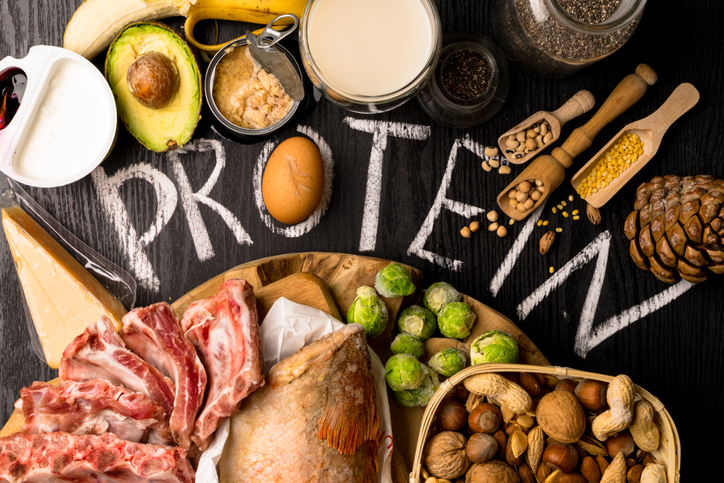You may have heard it said before, “You should really increase your protein intake so you can be healthy, fit and lose weight.” Countless blogs, websites, videos and even nightly news channels have focused their nutrition-related segments on the importance of protein. No need to search any further! I am going to share with you what protein is, what it does, where it can be found and which are the healthiest sources of protein.
First of all, let’s put down the simple facts
Protein is a member of an extremely exclusive group of nutrients called macronutrients. Macronutrients are characterized by their ability to provide energy in the form of calories from eating and digesting them. Carbohydrates, fats and protein are the only nutrients considered as macronutrients. Alcohol can give you energy, but like nutrients that do not provide calories, they are excluded from being considered macronutrients. Alcohol should be excluded from your diet since it doesn’t provide nutrients.
Known as the building blocks of life, proteins are made up of amino acids. Proteins are used in the body for a plethora of reasons:
- Building tissues during times of growth and development
- Providing structure for cells and tissues
- Maintaining pH levels
- Balancing fluids
- Strengthening our immune system
- Supplying energy.
There are 20 amino acids that our bodies need to function. Fortunately, our body can synthesize 11 of the amino acids we need from other materials or nutrients we eat. This would make these 11 known as nonessential proteins. The other 9 must come from our diet meaning they are known as essential proteins.
Complete vs. Complementary Proteins
Animal products like meat, poultry, and eggs contain all 9 essential proteins. This makes them known as complete proteins. There are a few plant-based foods considered to be complete proteins. Single ingredients food items such as quinoa and soy isolates are the only plant-based foods considered complete proteins. Incomplete proteins are foods containing less than all 9 essential proteins. Fortunately, these incomplete proteins can be combined and our body does not know the difference. These are known as complementary proteins. Large populations of the world eat a healthy diet and benefit from these food combinations. Combinations like peanut butter and whole wheat bread, beans and tortillas, and my personal favorite tofu and rice are all examples of complementary proteins.
If done correctly, eating a diet of complementary proteins can be considered healthier for some populations. A standard American diet of meat, cheese and poultry at almost every meal can lead to serious health consequences that we see in our hospitals.
Heart disease, diabetes, stroke and cancer are all elevated in populations who partake in eating a more westernized diet. Read The China Study for published research on that topic if you are interested. It’s not easy to pinpoint the exact reason why these diseases are associated with high-fat foods. It may be because if someone is filling their stomach up with meat and cheese there is literally less room for broccoli, peas and lentils. Or it may be because meat and cheese are frequently served by convenience-focused restaurants. Fast food, casual dining, frozen meals, and ready-to-eat meals are some of the simplest meals to prepare and eat. It’s hard to compete with convenience. It could also be that the saturated fat levels in animal products are higher compared to plant-based protein sources. No matter what the reason for American’s health issues, we could all stand to eat a bit healthier.
Daily Calorie Goal
All of this to say that protein is an important part of our diet. As previously mentioned, it is so important that we would die without it. Protein needs vary from person to person, but it’s a good rule to aim for 25-35% of our daily calories coming from protein.
Protein can be found in both animal and plant-based sources. Regardless of whether or not we eat a completely plant-based diet, our health would benefit from eating less red and processed meats, decreasing our saturated fat intake, and increasing the fruit, vegetables, whole grains and legumes in our diet.
The point of eating protein to provide for and strengthen our bodies. I think we should eat the healthiest form of protein that is out there.










